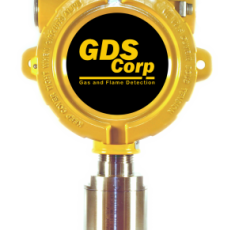For workers who spend much of their time working in confined spaces, there are a variety of dangers that are present each day. One of the biggest is the accumulation of methane, which if left undetected can lead to catastrophic events such as fires or explosions. However, by using a variety of methane gas detection systems, workers are now safer than ever before. Yet while safety has improved dramatically, it’s still important to have a thorough understanding of why methane accumulations in confined spaces is so dangerous.
Undetected Vapors
When workers are busy installing new equipment or conducting repairs, they are using numerous tools as well as putting themselves in situations where gas vapors can begin to accumulate. If this happens, disaster can result in a matter of moments. To ensure this does not happen, methane gas detectors are equipped to be extremely efficient in detecting even the smallest levels of methane, enabling workers to quickly evacuate the area.
How Does Methane Accumulate in Confined Spaces?
Because it’s colorless, tasteless, and odorless, methane can be a very difficult gas to detect before it’s too late. Along with this, it’s also able to travel long distances underground, allowing it to easily find its way into numerous types of confined spaces. With such common points of entry as floor and wall cracks, floor drains, sewer pipes, and utilities, it can accumulate in such confined spaces as crawl spaces, wall cavities, and other areas. Whether it’s a confined space on an offshore platform or within a chemical processing plant, the possibility of methane accumulation remains quite high.
Lower and Upper Explosive Limits
Even though methane is relatively non-toxic, the greatest threat comes in its ability to catch fire and explode rather quickly. In most cases, methane in confined spaces explodes at concentrations between 5%-15%, with most explosions occurring at levels of 9% or higher. Due to the high risks associated with methane, many companies now invest in methane Ch4 gas detectors to help protect workers.
Installing Methane Gas Detector Alarms
Since methane gas is lighter than air, the highest concentrations of it within confined spaces are usually found near ceilings. Because of this, a methane gas monitor in a confined space should always be installed no more than six inches from the ceiling, and should also be installed close enough to corners so that methane accumulations won’t be allowed to build up in these areas.
High Levels of Safety
By installing methane detectors in confined spaces as well as giving employees portable monitors to clip onto their belts or shirts, safety levels can increase dramatically. Since data from these monitors can be transmitted in real-time to management personnel as well as emergency workers located in nearby monitoring centers, most potentially dangerous situations can be handled quickly and with much more efficiency.
By contacting GDS Corporation today regarding methane accumulation in confined spaces, your company can find itself having greater peace of mind, knowing employees, equipment, and facilities are well-protected against potentially catastrophic situations.

